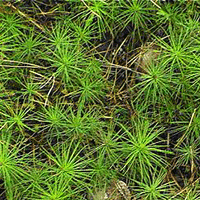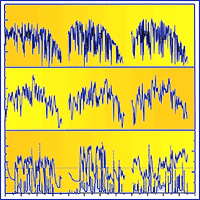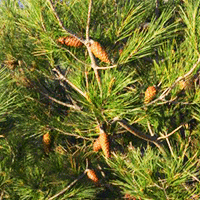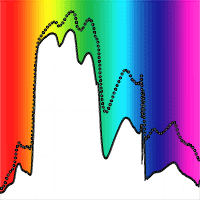The quantity and characteristics of coarse woody debris (CWD) were examined in four distinct pine ecosystems of north-western (NW) Spain, NW Russia and the NW USA. The average CWD volume and biomass ranged from 3.76 m3 ha-1, 1.55 Mg ha-1 in pine plantations in NW Spain to 24.86 m3 ha-1, 6.69 Mg ha-1 in Scots pine forest in NW Russia to 55.35 m3 ha-1, 20.38 Mg ha-1 and 77.04 m3 ha-1, 28.84 Mg ha-1 in ponderosa and lodgepole pine forests in the NW USA. Despite differences in species, ecological conditions and management histories, in all four ecosystems the mean snag volume was less than that of logs, most of the CWD mass was in an intermediate degree of decay, and mature stands had the greatest amount of CWD mass, followed by middle-age and then young stands. The CWD ratio (ratio of dead to live wood volume) ranged from 2.8% to 126.6%, depending on pine ecosystem and stand age, and was influenced by the type of natural and human disturbance. The difference in CWD amount and distribution among the regions studied reflected differences in disturbance history and management practices. Only in NW USA was the sample size large enough to examine the effect of disturbance type on CWD amount and distribution. There, fire and insect damage were found to considerably influence the amount of CWD in both lodgepole and ponderosa pine forests. Comparison of how different factors affect the amount and distribution of CWD in different ecosystems could be useful in developing ecologically sustainable forest management guidelines.
Keywords
, , , ,
Citation
Herrero C, Krankina O, Monleon Vicente J, Bravo F (2014). Amount and distribution of coarse woody debris in pine ecosystems of north-western Spain, Russia and the United States. iForest 7: 53-60. - doi: 10.3832/ifor0644-007
Academic Editor
Renzo Motta
Paper history
Received: May 21, 2012
Accepted: Jul 28, 2013
First online: Oct 28, 2013
Publication Date: Feb 03, 2014
Publication Time: 3.07 months
© SISEF - The Italian Society of Silviculture and Forest Ecology 2014
Open Access
This article is distributed under the terms of the Creative Commons Attribution-Non Commercial 4.0 International (https://creativecommons.org/licenses/by-nc/4.0/), which permits unrestricted use, distribution, and reproduction in any medium, provided you give appropriate credit to the original author(s) and the source, provide a link to the Creative Commons license, and indicate if changes were made.

Breakdown by View Type
(Waiting for server response...)
Article Usage
Total Article Views: 54406
(from publication date up to now)
Breakdown by View Type
HTML Page Views: 45462
Abstract Page Views: 3055
PDF Downloads: 4363
Citation/Reference Downloads: 29
XML Downloads: 1497
Web Metrics
Days since publication: 4431
Overall contacts: 54406
Avg. contacts per week: 85.95
Article Citations
Article citations are based on data periodically collected from the Clarivate Web of Science web site
(last update: Mar 2025)
(No citations were found up to date. Please come back later)
Publication Metrics
by Dimensions ©
Articles citing this article
List of the papers citing this article based on CrossRef Cited-by.
(1)
Angelstam PK (1998)Maintaining and restoring biodiversity in European boreal forests by developing natural disturbance regimes. Journal of Vegetation Science 9: 593-602.
CrossRef |
Gscholar
(2)
Atici E, Colak AH, Rotherham ID (2008)Coarse dead wood volume of managed oriental Beech (
Fagus orientalis Lipsky) stands in Turkey. Forest systems 17 (3): 216-227.
Online |
Gscholar
(3)
Bechtold WA, Scott CT (2005)The forest inventory and analysis plot design. In: “The enhanced forest inventory and analysis program” (Bechtold WA, Patterson PL eds). Gen. Tech. Rep. SRS-GTR-80, USDA Forest Service, Asheville, NC, USA, pp. 27-42.
Gscholar
(4)
Butler R, Schlaepfer R (2004)Dead wood in managed forests: how much is enough? Schweizerische Zeitschrift für Forstwesen 155 (2): 31-37.
CrossRef |
Gscholar
(5)
Carlyle JC (1995)Nutrient management in a
Pinus radiata plantation after thinning: the effect of thinning and residues on nutrient distribution, mineral nitrogen fluxes, and extractable phosphorus. Canadian Journal of Forest Research 25: 1278-1291.
CrossRef |
Gscholar
(6)
Davis JW (1983)Snags are for wildlife. In: “Proceedings of the symposium on snag habitat management” (Davis JW, Goodwin GA, Ockenfels RA eds). Gen. Tech. Rep. RM-99, USDA Forest Service, Flagstaff, Arizona, USA, pp. 4-9.
Gscholar
(7)
Duvall MD, Grigal DF (1999)Effects of timber harvesting on coarse woody debris in red pine forests across the Great Lakes states, USA. Canadian Journal of Forest Research 29 (12): 1926-1934.
CrossRef |
Gscholar
(8)
DeBell DS, Curtis RC, Harrington CA, Tappeiner JC (1997)Shaping stand development through silvicultural practices. In: “Creating forestry for the 21 century (Kohm LA, Franklin JF eds). The science of ecosystem management. Island Press, Washington, DC, USA, pp. 141-151.
Gscholar
(9)
deMaynadier PG, Hunter MLJr (1995)The relationship between forest management and amphibian ecology: a review of the North American literature. Environmental Research 3: 230-261.
Gscholar
(10)
DGCN (1996)Segundo inventario forestal nacional completo: 1986-1996. Parques Nacionales, Madrid, Spain. [in Spanish]
Gscholar
(11)
Donnegan J, Campbell S, Azuma D (2008)Oregon’s forest resources, 2001-2005. Gen. Tech. Rep. PNW-GTR-765, USDA Forest Service, Portland, Oregon,USA, pp. 186.
Gscholar
(12)
Esseen PA, Ehnstrom B, Sjoberg K, Ericson L (1997)Boreal forests. In: “Boreal ecosystems and landscapes: structures, processes and conservation of biodiversity” (Hanson L ed). Ecological Bulletins 46, pp. 16-47.
Online |
Gscholar
(13)
Forsee Project (2005)Proyecto FORSEE (20) INTERREG III B Espacio atlántico
Online |
Gscholar
(14)
Franklin JF, Dyrness CT (1973)Natural vegetation of Oregon and Washington. General Technical Report PNW-8, USDA Forest Service, Portland, Oregon, USA, pp. 417.
Gscholar
(15)
Fridman J, Walheim M (2000)Amount, structure, and dynamics of dead wood on managed forestland in Sweden. Forest Ecology and Management 131: 23-36.
CrossRef |
Gscholar
(16)
Goodburn JM, Lorimer CG (1998)Cavity trees and coarse woody debris in old-growth and managed northern hardwood forests in Wisconsin and Michigan. Canadian Journal of Forest Research 28: 427-438.
CrossRef |
Gscholar
(17)
Green P, Peterken GF (1997)Variation in the amount of dead wood in woodlands of the Lower Wye Valley, UK in relation to the intensity of management. Forest Ecology and Management 98: 229-228.
CrossRef |
Gscholar
(18)
Grove SJ (2001)Extend and composition of dead wood in Australian lowland tropical rainforest with different management histories. Forest Ecology and Management 154: 35-53.
CrossRef |
Gscholar
(19)
Harmon ME, Franklin JF, Swanson FJ, Sollins P, Gregory SV, Lattin JD, Anderson NH, Cline SP, Aumen NG, Sedell JR, Lienkaemper GW, Cromack K Jr, Cummins KW (1986)Ecology of coarse woody debris in temperate ecosystems. Advances in Ecological Research 15: 133-302.
CrossRef |
Gscholar
(20)
Harmon M, Sexton J (1996)Guidelines for measurements of woody detritus in forest ecosystems. Publication no. 20, US/LTER Network Office, University of Washington, Seattle, WA, USA.
Gscholar
(21)
Harmon ME, Woodall CW, Fasth B, Sexton J (2008)Woody detritus density and density reduction factors for tree species in the United States: a synthesis. Gen. Tech. Rep. NRS-GTR-29, USDA Forest Service,
Gscholar
(22)
Herrero C, Pando V, Bravo F (2010)Modelling coarse woody debris in
Pinus spp. plantations. A case study in Northern Spain. Annals of Forest Science 67: 708-716.
CrossRef |
Gscholar
(23)
Hessburg PF, Agee JK, Franklin JF (2005)Dry forests and wildland fires in the inland Northwest USA: contrasting the landscape ecology of the pre-settlement and modern eras. Forest Ecology and Management 211: 117-139.
CrossRef |
Gscholar
(24)
Hyvonenn R, Olsson AB, Lundkvist H, Staaf H (2000)Decomposition and nutrient release from
Picea abies (L.) Karst. and
Pinus sylvestris L. logging residues. Forest Ecology and Management 126: 97-112.
CrossRef |
Gscholar
(25)
Jakoby O, Rademacher C, Grimm V (2010)Modelling dead wood islands in European beech forests: how much and how reliably would they provide dead wood? European Journal of Forest Research 129: 659-668.
CrossRef |
Gscholar
(26)
Krankina ON, Harmon ME (1995)Dynamics of the dead wood carbon pool in Northwestern Russian boreal forest. Water Air and Soil Pollution 82 (1/2): 227-238.
CrossRef |
Gscholar
(27)
Krankina ON, Harmon ME, Griazkin AV (1999)Nutrient stores and dynamics of woody detritus in a boreal forest: modelling potential implications at the stand level. Canadian Journal of Forest Research 29: 20-32.
CrossRef |
Gscholar
(28)
Krankina ON, Harmon ME, Kukuev YA, Treyfeld RF, Kashpor NN, Kresnov VG, Skudin VM, Protasov NA, Yatskov M, Spycher G, Povarov ED (2002)Coarse woody debris in forest regions of Russia. Canadian Journal of Forest Research 32: 768-778.
CrossRef |
Gscholar
(29)
Laudenslayer WF (2005)Effects of site on the demographics of standing dead trees in eastside pine forests. In: Proceedings of the Symposium “Ponderosa pine: issues, trends, and management” (Ritchie MW, Youngblood A, Maguire DA eds). Gen. Tech. Rep. PSW-GTR-198, USDA Forest Service, California, USA, pp. 171-181.
Gscholar
(30)
Linder P, Elfving B, Zackrisson O (1997)Stand structure and successional trends in virgin boreal forest reserves in Sweden. Forest Ecology and Management 98: 17-33.
CrossRef |
Gscholar
(31)
Lombardi F, Lasserre B, Tognetti R, Marchetti M (2008)Deadwood in relation to stand management and forest type in central Apennines (Molise, Italy). Ecosystems 11: 882-894.
CrossRef |
Gscholar
(32)
Lombardi F, Chirici G, Marchetti M, Tognetti R, Lasserre B, Corona P, Barbati A, Ferrari B, Di Paolo S, Giuliarelli D, Mason F, Iovino F, Nicolaci A, Bianchi L, Maltoni A, Travaglini D (2010)Deadwood in forest stands close to old-growthness under Mediterranean conditions in the Italian Peninsula. Italian Journal of Forest and Mountain Environments 65: 481-504.
CrossRef |
Gscholar
(33)
Marage D, Lemperiere G (2005)The management of snags: a comparison in managed and unmanaged ancient forests of the southern French Alps. Annals of Forest Science 62: 135-142.
CrossRef |
Gscholar
(34)
Merganicôvá K, Merganic J (2010)Coarse woody debris carbon stocks in natural spruce forests of Babia hora. Journal of Forest Science 56: 397-405.
Online |
Gscholar
(35)
McComn W, Lindenmayer D (1999)Dying, dead, and down trees. In: “Maintaining Biodiversity in Forest Ecosystems” (Malcon L, Hunter JR eds). Cambridge University Press, Cambridge, UK, pp. 335-372.
Gscholar
(36)
Motta R, Berretti R, Lingua E, Piussi P (2006)Coarse woody debris, forest structure and regeneration in the Valbona Forest Reserve, Panaveggio, Italian Alps. Forest Ecology and Management 235: 155-163.
CrossRef |
Gscholar
(37)
Oria de Rueda JA, Díez J, Rodríguez M (1996)Guía de las plantas silvestres de Palencia. Cálamo, Palencia, Spain. [in Spanish]
Gscholar
(38)
Ranius T, Kindvall O, Kruys N, Jonsson BG (2003)Modelling dead wood in Norway spruce stands subject to different management regimes. Forest Ecology and Management 182: 13-29.
CrossRef |
Gscholar
(39)
SAS Institute Inc (2010)SAS/STATTM User’s Guide, Relase 9.1. Cary, NC, USA.
Gscholar
(40)
Siitonen J, Martikainen P, Punttila P, Rauh J (2000)Coarse woody debris and stand characteristics in mature managed and old-growth boreal mesic forests in southern Finland. Forest Ecology and Management 128: 211-225.
CrossRef |
Gscholar
(41)
Spetich MA, Shifley SR, Parker GR (1999)Coarse woody debris in midwestern old-growth forests. Forest Science 45: 302-313.
Gscholar
(42)
Spies TA, Franklin JF, Thomas TB (1988)Coarse woody debris in Douglas-fir forests of western Oregon and Washington. Ecology 69: 1689-1702.
CrossRef |
Gscholar
(43)
Tinker DB, Knight DH (2000)Coarse woody debris following fire and logging in Wyoming lodgepole pine forests. Ecosystems 3: 472-483.
CrossRef |
Gscholar
(44)
USDA Forest Service (2007)Forest inventory and analysis program: field instructions for the annual inventory of Washington, Oregon and California. Pacific Northwest Research Station, Portland, OR, USA, pp. 172.
Online |
Gscholar
(45)
Vallauri D, Andre J, Blondel J (2003)Dead wood - a typical shortcoming of managed forests. Revue Forestiere Francaise 55 (2): 99-112.
CrossRef |
Gscholar
(46)
Van Wagner CE (1968)The line-intersect method in forest fuel sampling. Forest Science 14: 20-26.
Gscholar
(47)
Vandekerkhove K, De Keersmaeker L, Menke N, Meyer P, Verschelde P (2009)When nature takes over from man. Dead wood accumulation in previously managed oak and beech woodlands in north-western and central Europe. Forest Ecology and Management 258 (4): 425-435.
CrossRef |
Gscholar
(48)
von Oheimb G, Westphal C, Härdtle W (2007)Diversity and spatio-temporal dynamics of dead wood in a temperate near-natural beech forest (
Fagus sylvatica). European Journal of Forest Research 126: 359-370.
CrossRef |
Gscholar
(49)
Warren WG, Olsen PF (1964)A line-intersect technique for assessing logging waste. Forest Science 10: 267-276.
Gscholar
(50)
Woldendorp G, Keenan RJ, Barry S, Spencer RD (2004)Analysis of sampling methods for coarse woody debris. Forest Ecology and Management 198: 133-148.
CrossRef |
Gscholar
(51)
Woodall CW, Monleon VJ (2008)Sampling protocol, estimation, and analysis procedures for the down woody materials indicator of the FIA Program (2 edition). Gen. Tech. Rep. NRS-GTR-22, USDA Forest Service, St. Paul, MN, USA.
Gscholar
(52)
Woodall CW, Rondeux J, Verkerk PJ, Stahl G (2009)Estimating dead wood during national forest inventories: a review of inventory methodologies and suggestions for harmonization. Environmental Management 44: 624-631.
CrossRef |
Gscholar
(53)
Yatskov M, Harmon ME, Krankina ON (2003)A chronosequence of wood decomposition in the boreal forests of Russia. Canadian Journal of Forest Research 33: 1211-1226
CrossRef |
Gscholar


















